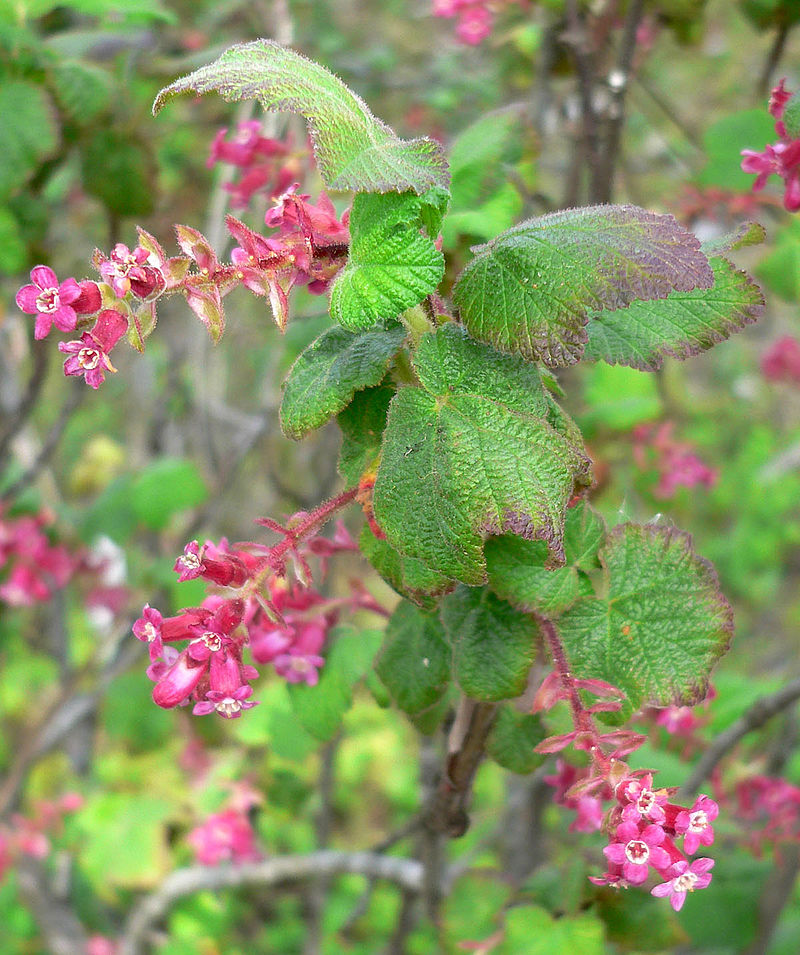
Endemic to California and Baja California where it grows in chaparral, foothill oak woodlands, and closed-cone pine forests, this deciduous shrub is a member of the gooseberry family, Grossulariaceae, that consists of one genus with about 200 species that are currents or gooseberries. The multi-stemmed shrub grows 5-10′ tall, lacks nodal spines on the stem, and has thin, 3 lobed leaves that are .8-2″ long, densely hairy, glandular, and have double toothed margins. From fall to spring, pendant clusters of 10-25 small, pink to purple or white flowers appear and give way to tiny red to purple, edible fruits that are glandular and covered with white hairs. The flowers attract hummingbirds and other pollinators and the fruits provide food for birds. In their native habitat, the plants go dormant in the summer under drought stress and make chaparral current a good choice for a xeriscape where it could be an especially beautiful addition to a winter garden. The genus name, Ribes, comes from the Arabic or Persian word ribas meaning acid. The specific epithet, malvaceum, is a new Latin word means mallow-like, and refers to the leaves.
Type: Shrub
Outstanding Feature: Flowers, low water requirement
Form: Spreading
Growth Rate: Rapid
Bloom: Pendant clusters of 10-25 small, pink to purple or white flowers from fall to spring
Size: 5-10′ H x 5′ W
Light: Full sun, partial shade
Soil: Average, dry to medium moist, well-drained
Hardiness: Zones 7-10
Care: Prune after fruiting or during dry season
Pests and Diseases: Honey fungus; alternative host for white pine blister rust
Propagation: Seed, half-ripe cuttings in mid summer, mature wood cuttings of the current year’s growth in late autumn to late winter
Outstanding Selection: ‘Dancing Tassels’
Photo Credit: Stan Shebs Wikimedia Commons